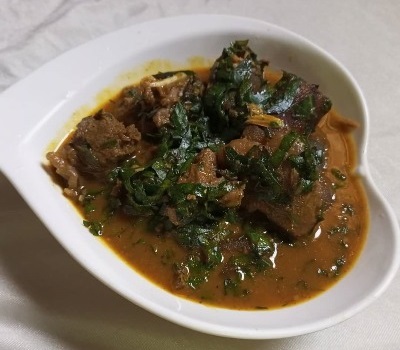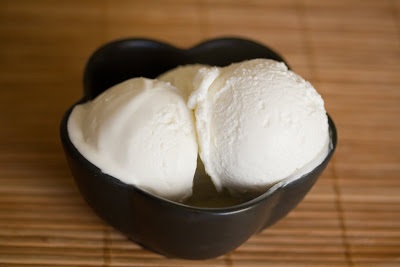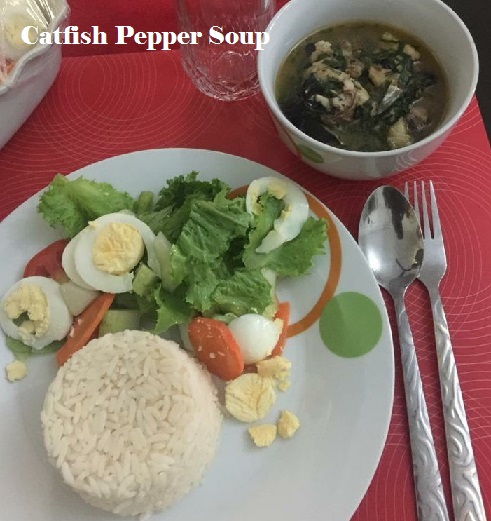
Ofor Seed is the fruit of the Detarium Microcarpum tree is edible and high in vitamin C; the leaves and seeds are used in cooking; and the roots bark, and stems are used to cure illnesses such as meningitis, TB, itches, and diarrhoea. Detarium Microcarpuim is called ‘Ofor,in Igbo, while the Yorubas call it ‘ogbogbo,’ and the Hausas call it ‘taura.’
The air-dried seeds are crushed and grind into powder to make ofor powder, which is a native soup thickening spice.
The indigenous name for this plant’s seeds is ofor, and the gelatinous texture and stickiness of the seeds make it a successful soup thickener.
Basically, in seasons when cocoyam (Xanthosoma spp.) becomes scarce or so expensive, Ofor can readily replace them or Achi Brachystegia eurycoma.
However, ofor powder thickens soups and gives a distinct flavor to soups, stews, and sauces. It also adds the ideal amount of flavor and freshness to dishes.
Achi Seed – Achi Powder
“Achi”- Brachystegia eurycoma also known as “achi” by the Igbos, “akolodo” by the Yorubas, “okweri” by the Binis, “ukung” by the Efiks, and “akpakpo” by the Ijaws.
Ukpo Seeds – Ukpo Powder
“Ukpo” – Mucuna solannie The Igbos call it ‘ukpo,’ the Yorubas call it ‘yerepe,’ while the Hausas call it ‘karasau.’
Health Benefits of Ofor
Antioxidants in Ofor seeds limit the activity of enzymes such as -amylase and -glucosidase, slowing digestion and reducing the quantity of glucose absorbed per unit of time. Perfect for diabetic person
Helps Wounds to Heal; because ofor seeds contain ascorbic acid, which is necessary for wound healing.
Carbohydrates, protein, fiber, and important minerals including Magnesium, Sodium, Phosphorus, and Calcium may all be found in Ofor seeds.
The rest of the plant is equally crucial. Moreover, fever, Stomach problems, urinary infection, and gonorrhea are all treated with the leaves.
Nutritional Value of Ofor Seed or Ofor flour
According to research, ofor seed is an excellent source of carbohydrate, minerals, vitamin C, vitamin B, fiber, and folic acid, as well as contribute to daily protein and fat requirements.
It contains 12.0- 15.6% protein; 35.4- 68.2% carbohydrate, 0.79g/ml vitamins; and 6.0% fat
Most states in Nigeria, especially in South East, and South-South the Niger Delta region have been discovered to use grounded flours /powder from ‘ofo’, ‘achi,’ and ‘ukpo.’ In making traditional soups, they’re utilized as a thickening (for eating Fufu, Eba, and pounded yam). Because of their gum content, they may be employed as both emulsifiers and flavoring agents in traditional soups. These aren’t real gums; instead, they’re made up of smaller structures seeds. When crushed to flour, these seeds’ gums have the capacity to expand in water and therefore alter the viscosity of any liquid to become thicken.
The difference Between Achi and Ofor
Achi seed is flat with smooth skin while ofor seed is slightly rocky. Achi powder is usually light brown in color and ofor is off-white. There is no major difference between achi and ofor rather they are more similar in terms of gelatinous texture and stickiness of the seeds when used as a soup thickener.
“Achi”botanically known as Brachystegia eurycoma while Ofor is Detarium microcarpum in English
Ofor Powder
The seeds of ofor are usually grinded into powder before using as thickening agent for soups, sauce and stew.
Ofor Soups
There are different types of soups cooked with ofor powder such as
How to Make Ofor Soup – Ofe Uziza Leaf with Ofor Powder

Ingredients
- Uziza and Ugu leaves
- 1 cooking spoon Grind Ofor powder
- 3 cooking spoons of Red Palm Oil
- Beef and Kpomo/ pomo (cow skin)
- Dry Fish and Stock Fish
- Chili pepper and crayfish
- 1 teaspoon Ogiri Igbo
- 2 Stock cubes
- Salt to taste
Cooking Directions
- First of all, wash and boil your beef with salt and 1 seasoning cube to almost tender.
- Secondly, add your already washed stockfish, kpomo/pomo, and dry fish into the cooking pot, add more water and cook to doneness/tender.
- Thirdly, pour in the palm oil and cook for 10 minutes, thereafter, add your pepper, ogiri Igbo, and ground crayfish, seasoning cube, and cook for about 5 minutes.
- Next is to stir ensure you have enough water for the soup else you add a little more water cover and continue cooking.
There are 3 ways to adding Ofor powder into the soup (1. either your mix powder with 1 spoon of palm oil, 2. dissolve with little water on a small plate or, 3. sprinkle the powder into the soup, sprinkling wrongly may form seed/lumps if not done properly)
- Then dissolve and add your Ofor powder into the soup cover the pot and cook on high heat as the soup thickens open and stir properly to mix.
- Finally, add the already washed and sliced Uziza and Ugu leaves and allow cooking for about 2 minutes.
- Taste for salt, stir and the soup is ready!
Serve and enjoy with choice Fufu swallow


